Eyes on the Sky
Watching the total solar eclipse was life-changing. Not only was it beautiful, but it also shed light into why we need to relish every moment.
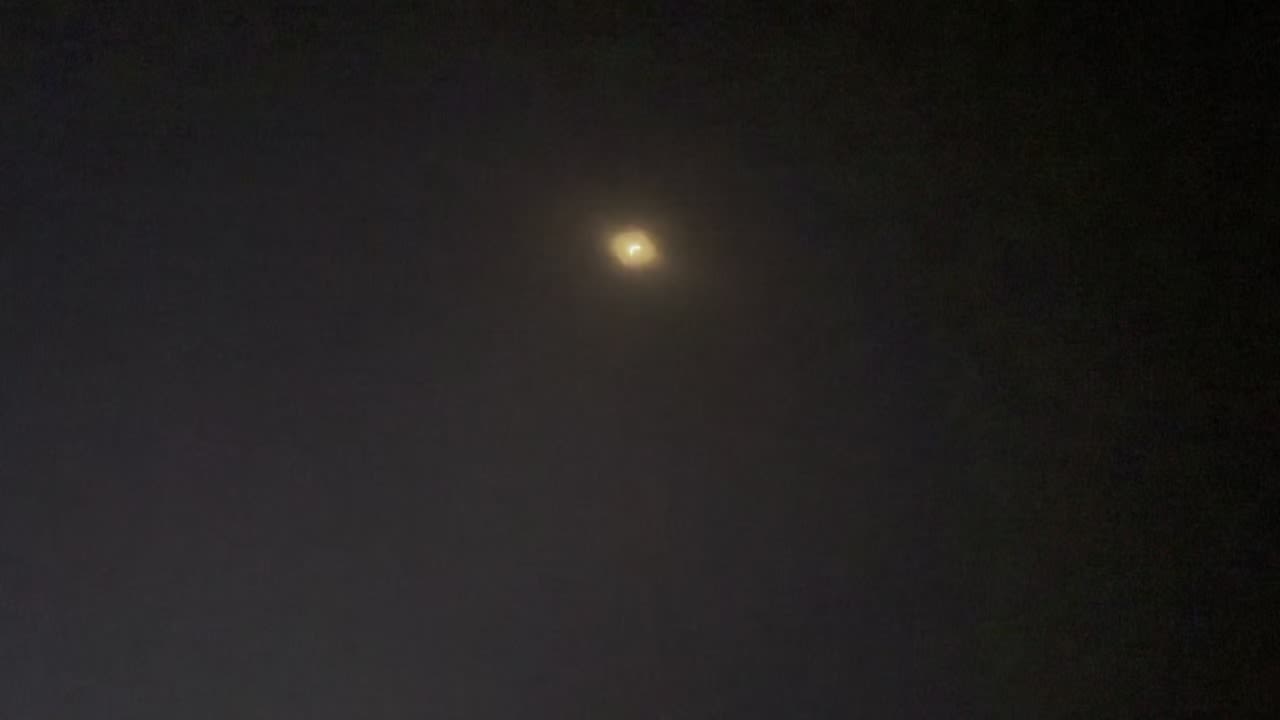
When I removed my eclipse glasses, I stood in awe. The clear blue sky transformed into twilight, replacing the wispy clouds with Jupiter and Venus. As I gazed at the obstructed sun, I had a chance to reflect–and pause.
On Monday, a total solar eclipse traveled across North America, treating millions to a breathtaking celestial show. The celestial event entered the continent near the Mexican resort town of Mazatlan and passed through 15 American states–including Vermont and New Hampshire– before exiting near Newfoundland.
Monday’s solar eclipse was the first in seven years visible to Americans, and it did not disappoint. In August 2017, residents from Oregon to South Carolina landed in the path of totality. I remember the excitement and so-called ‘eclipse fever’ spreading. This sentiment, however, was limited in Boston due to its unfavorable proximity to totality. Despite viewing the fantastical display at 63 percent, I was eager to see a full eclipse.

When Upper School Physics Teacher Chris Hardman offered the opportunity to travel to northern Vermont and witness totality with 12 other students, I could not refuse.
Our bus left School at 9:45 a.m. from the parking lot with our sights on Colebrook, New Hampshire. The traffic, however, had other plans. Almost immediately, we sat on the congested interstate.
We expected traffic as the state of New Hampshire reported thousands of eclipse chasers would flood the state to catch the rare event. As a contingency plan, we set our route guidance to Lancaster, where the path of totality began. Even though totality would last less than a minute, we would still see the magnificent event.
Entering New Hampshire, the traffic worsened. We had been on the road for four hours by the time we reached Franconia Notch. By then, our map services showed we would not reach Lancaster in time for totality.
Since Lancaster was the start of the eclipse in New Hampshire, we looked for locations in Vermont within the path of totality. After ten minutes, I found St. Johnsbury, a small town that saw around a minute and a half of totality.
While the bus raced toward the Vermont border, the eclipse began. We rushed to the back of the van, equipped with our glasses. Enthusiastically, we pointed toward the sun as the moon blotted out the sun.
With nine minutes to spare, the bus pulled into a campground parking off Interstate 93. We filed out of the van, sporting our eclipse glasses. We stood waiting in anticipation as the sliver of sun faded into darkness

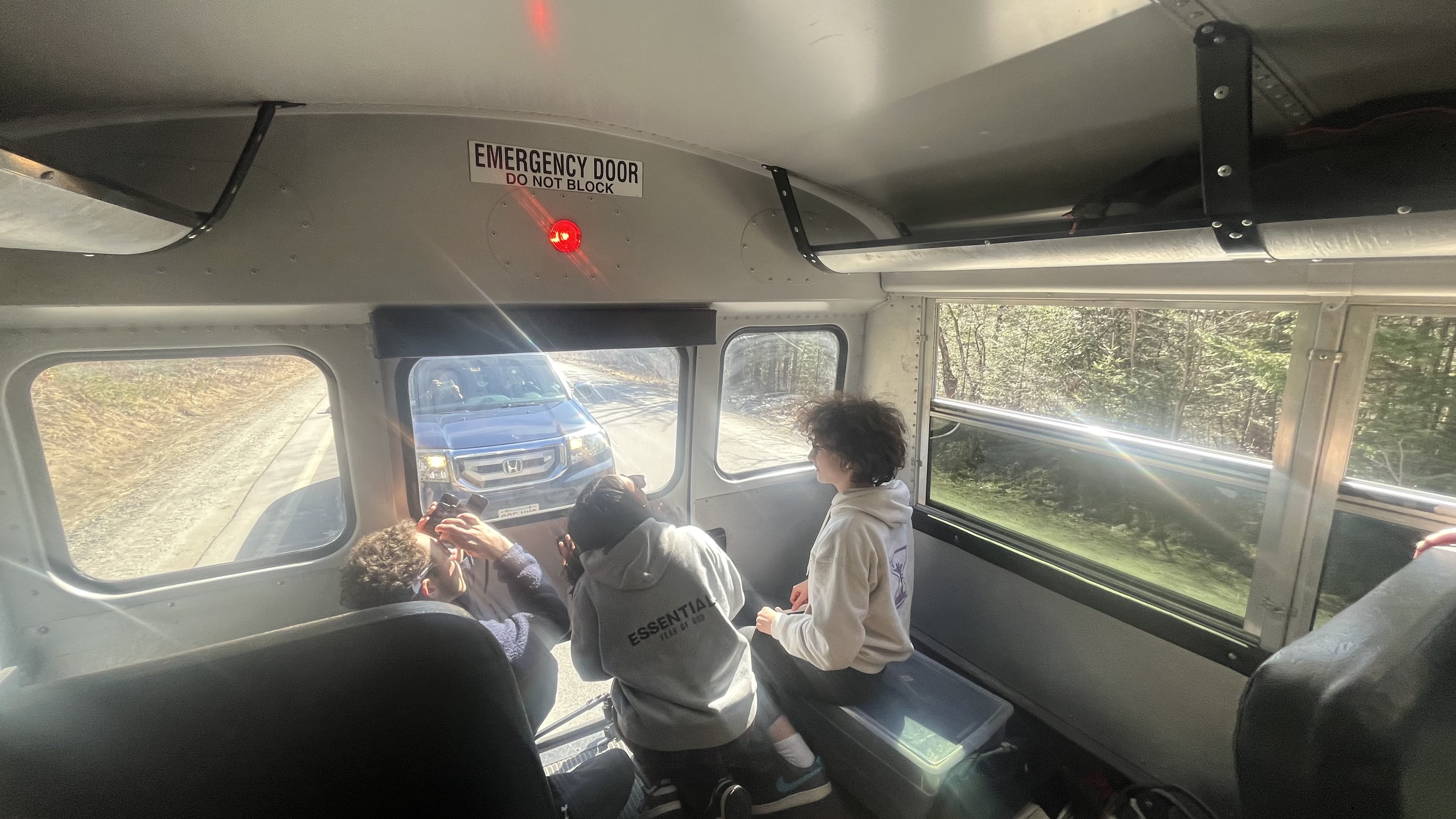
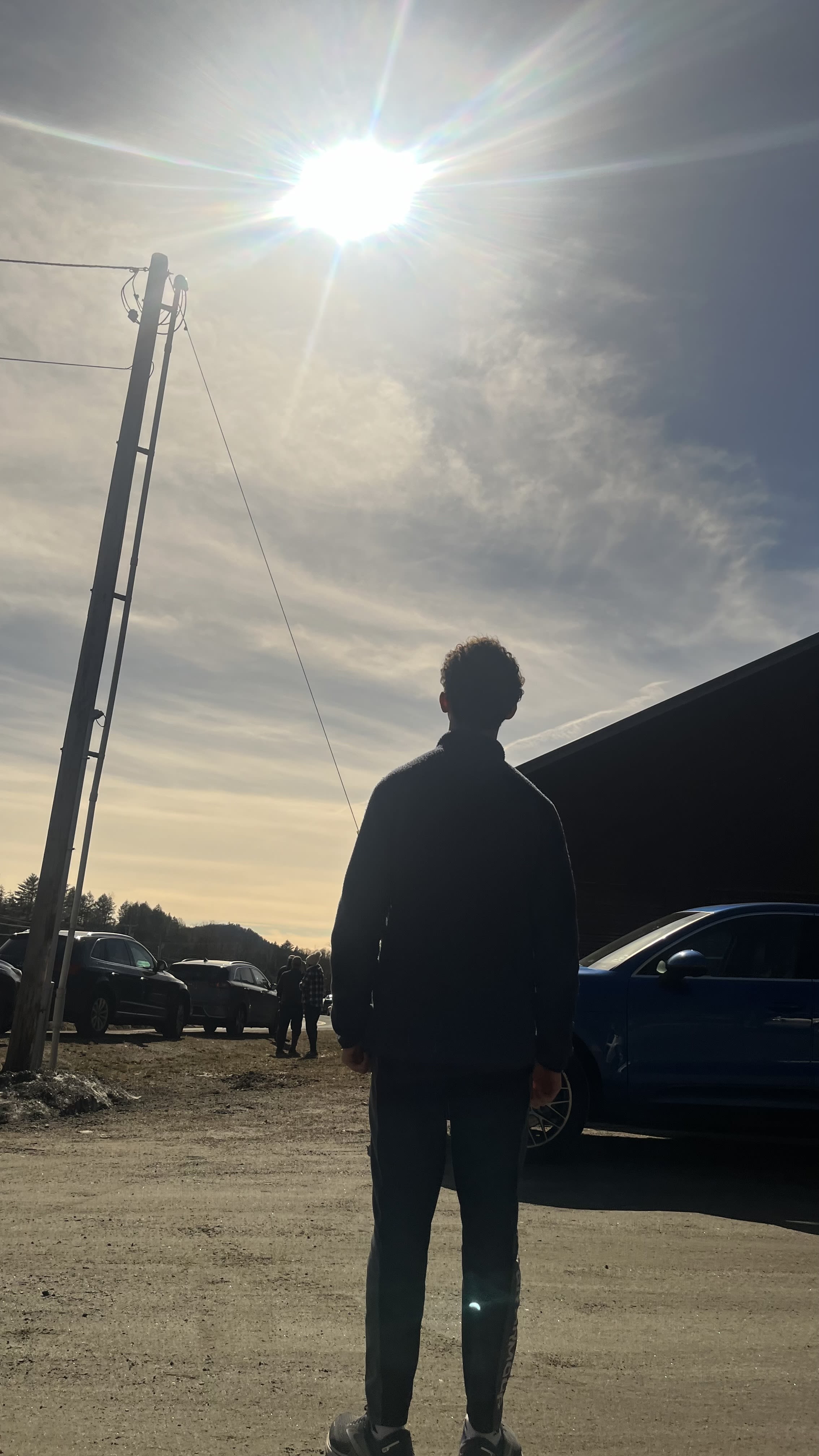
Where the group was during totality
Totality
Once the moon completely shaded the sun, we collectively removed our glasses. It was a sight to behold, one I had never experienced before.
Video shows a timelapse of a total solar eclipse from St. Johnsbury, VT. A group of students traveled with Upper School Physics teacher Chris Hardman to Vermont to witness totality. After getting stuck in hours of traffic, the crew saw just over 90 seconds of totality. Video courtesy of Patrick Whalen.
Instead of the glaring sun, the moon dominated the sky with a glowing aura. The corona–the outer layer of the sun–is only perceptible to humans during totality. The ambiance added to the surreal feeling. I was in shock as I looked at the time on my phone. It was not 3:30 a.m., rather 3:30 p.m.
Jonathan Walsh '25, a student who traveled to Vermont, summed up the experience well.
“It was like a light switch,” Walsh said.
It was like a light switch
Furthermore, I noted the vivid orange and yellows streaking throughout the sky in every direction. The 360-degree sunset is one of the distinct features of a solar eclipse.
Yet, totality was more than just a spectacle for the eyes. The air was crisper, and the wind suddenly changed direction. Even though I wore a jacket, I still felt a shiver race down my spine. It was as if time had stopped and soaked in the exquisite sight.
Despite the long travel delays, the experience of watching a total eclipse was worthwhile. My classmates agree.
“Totality, it was kind of a life-changing experience,” Shyla Fernandes '25, another classmate who witnessed totality with the group, said.
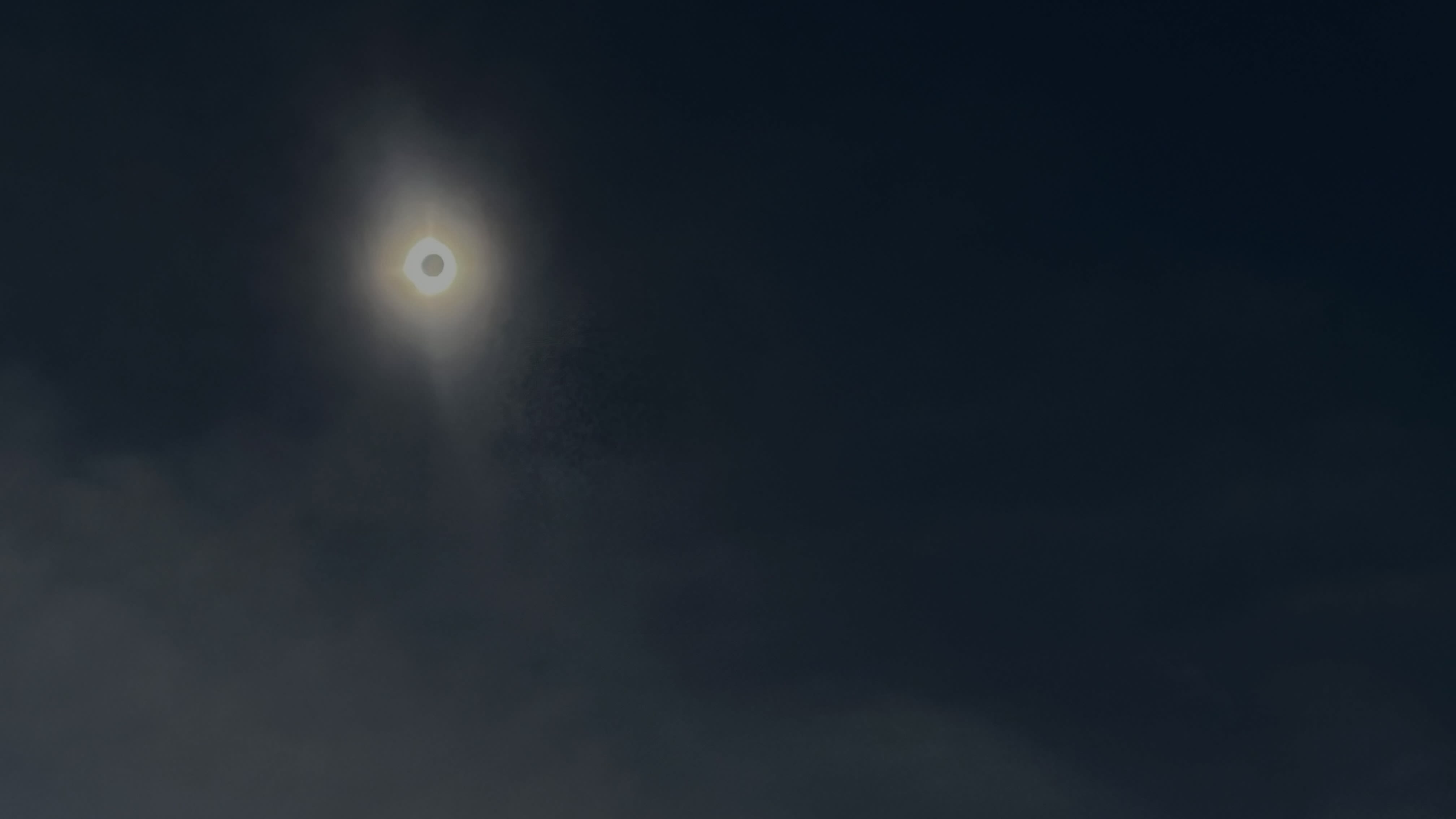
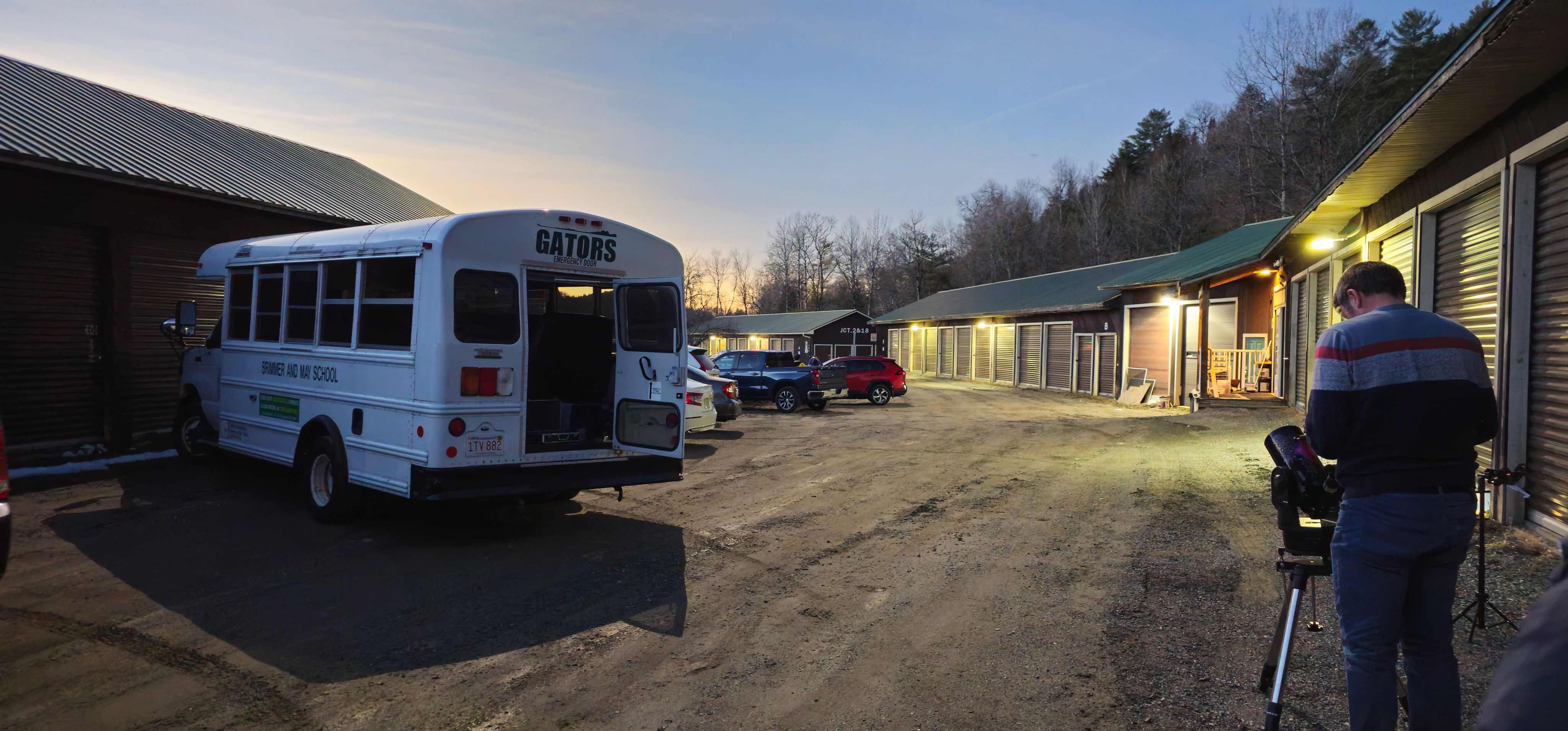
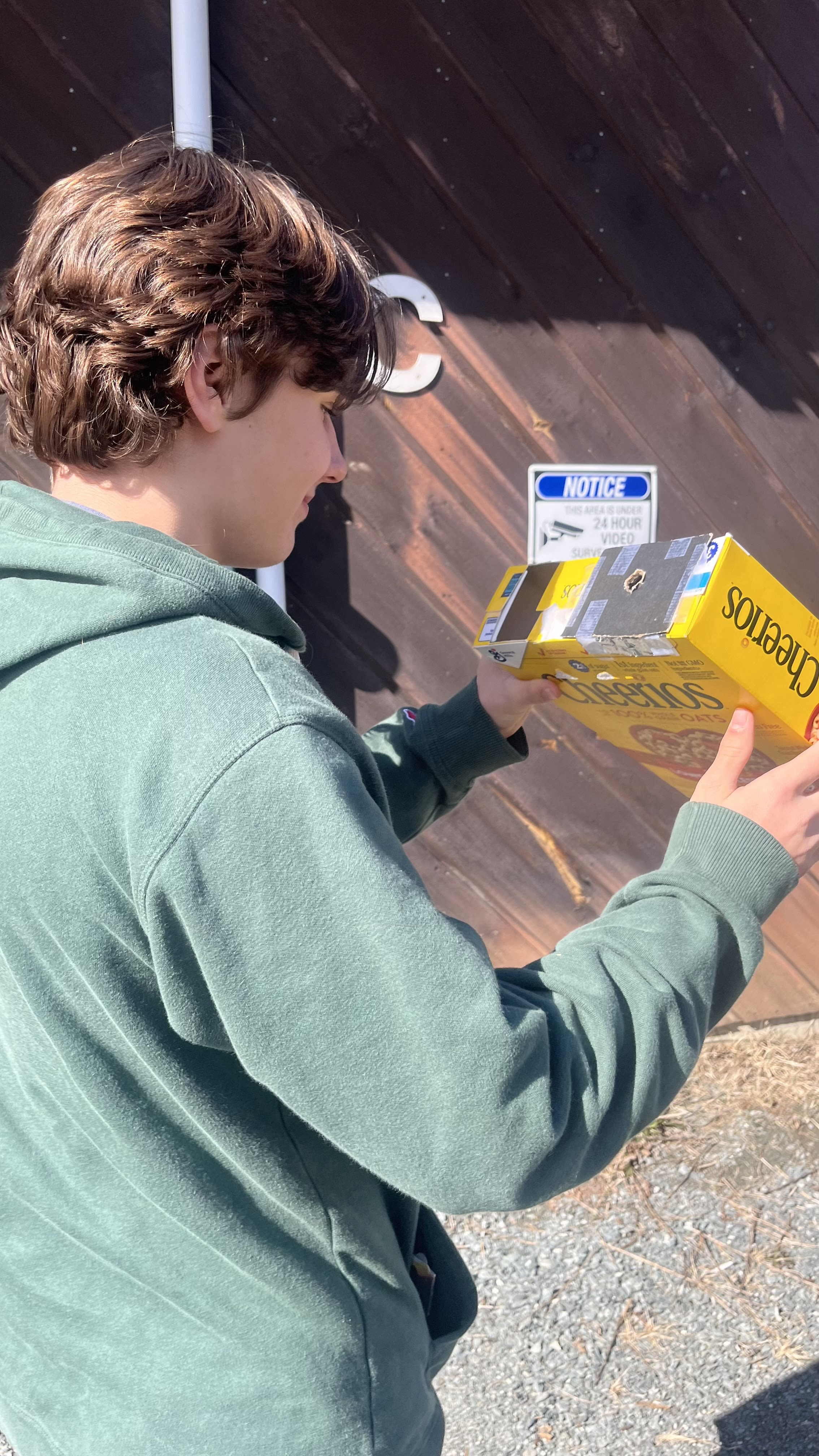
Noah Panto '25 looks through a solar projector to view the solar eclipse. Students were able to view the eclipse both in Vermont and Massachusetts. Photo courtesy of Evan Michaeli.
Noah Panto '25 looks through a solar projector to view the solar eclipse. Students were able to view the eclipse both in Vermont and Massachusetts. Photo courtesy of Evan Michaeli.
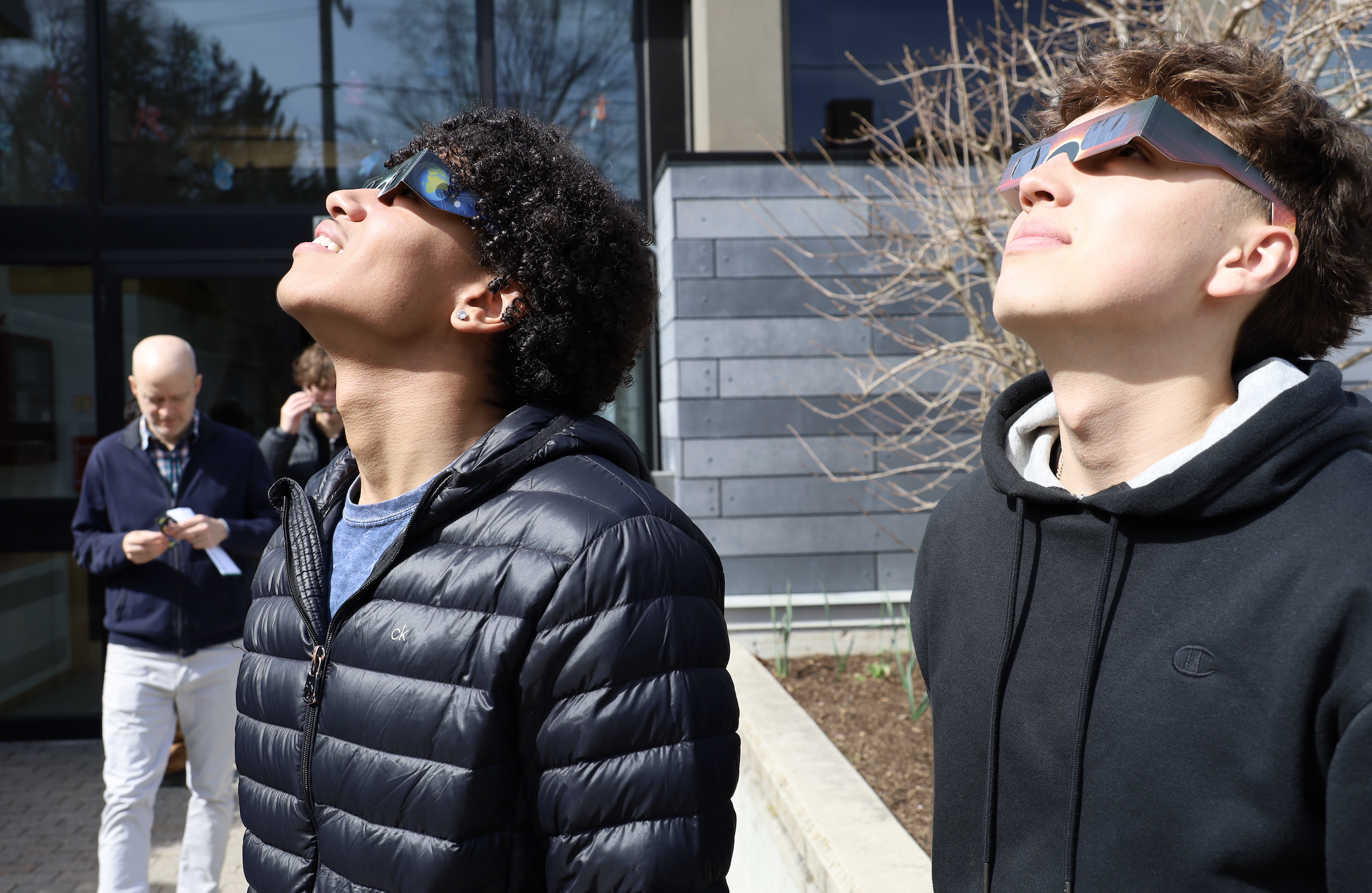
Raymond Baez '24 and Will Apen '25 look at the solar eclipse at School. Photo courtesy of David Cutler.
Raymond Baez '24 and Will Apen '25 look at the solar eclipse at School. Photo courtesy of David Cutler.
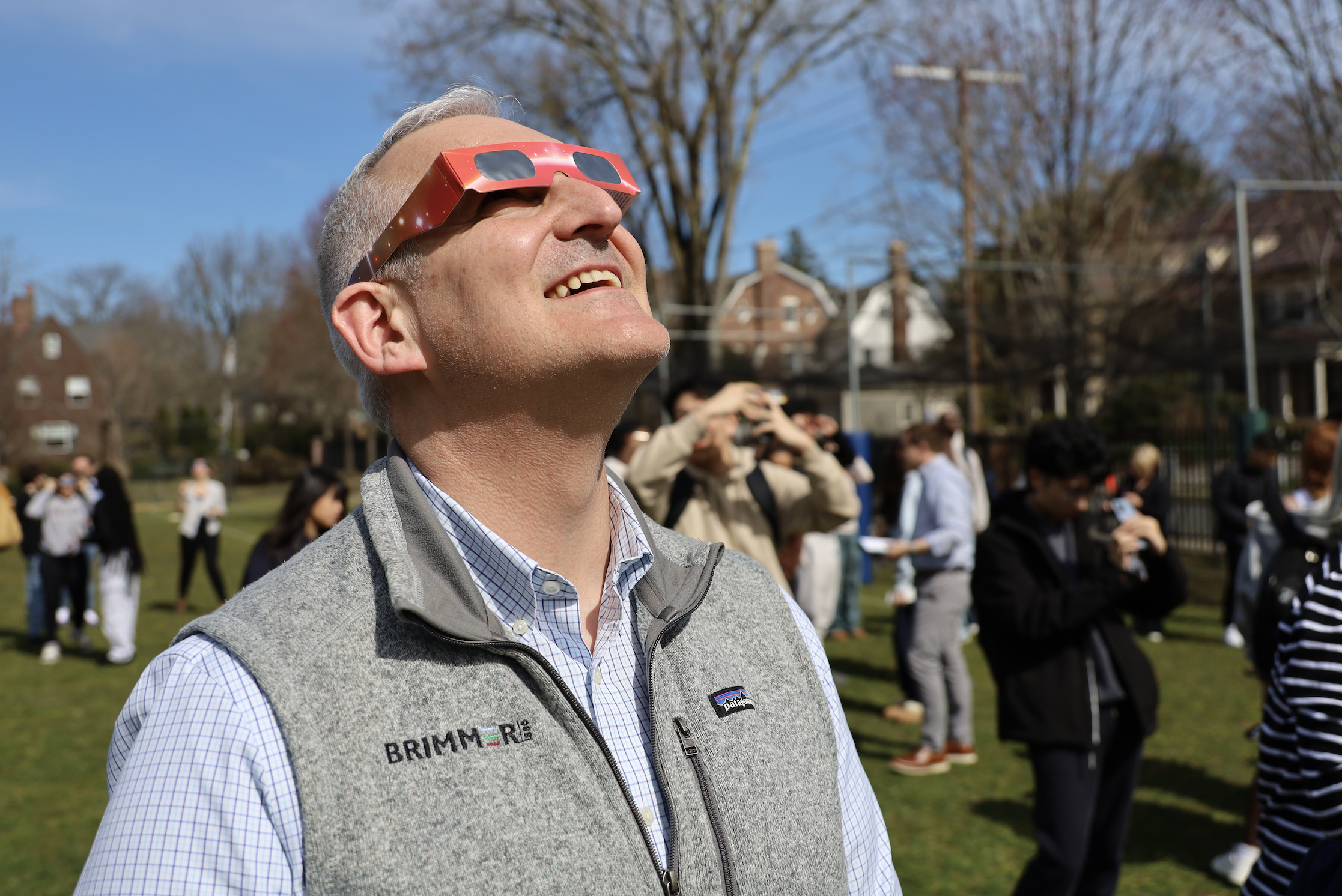
Upper School Head Joshua Neudel views the solar eclipse through special glasses. Photo courtesy of David Cutler.
Upper School Head Joshua Neudel views the solar eclipse through special glasses. Photo courtesy of David Cutler.
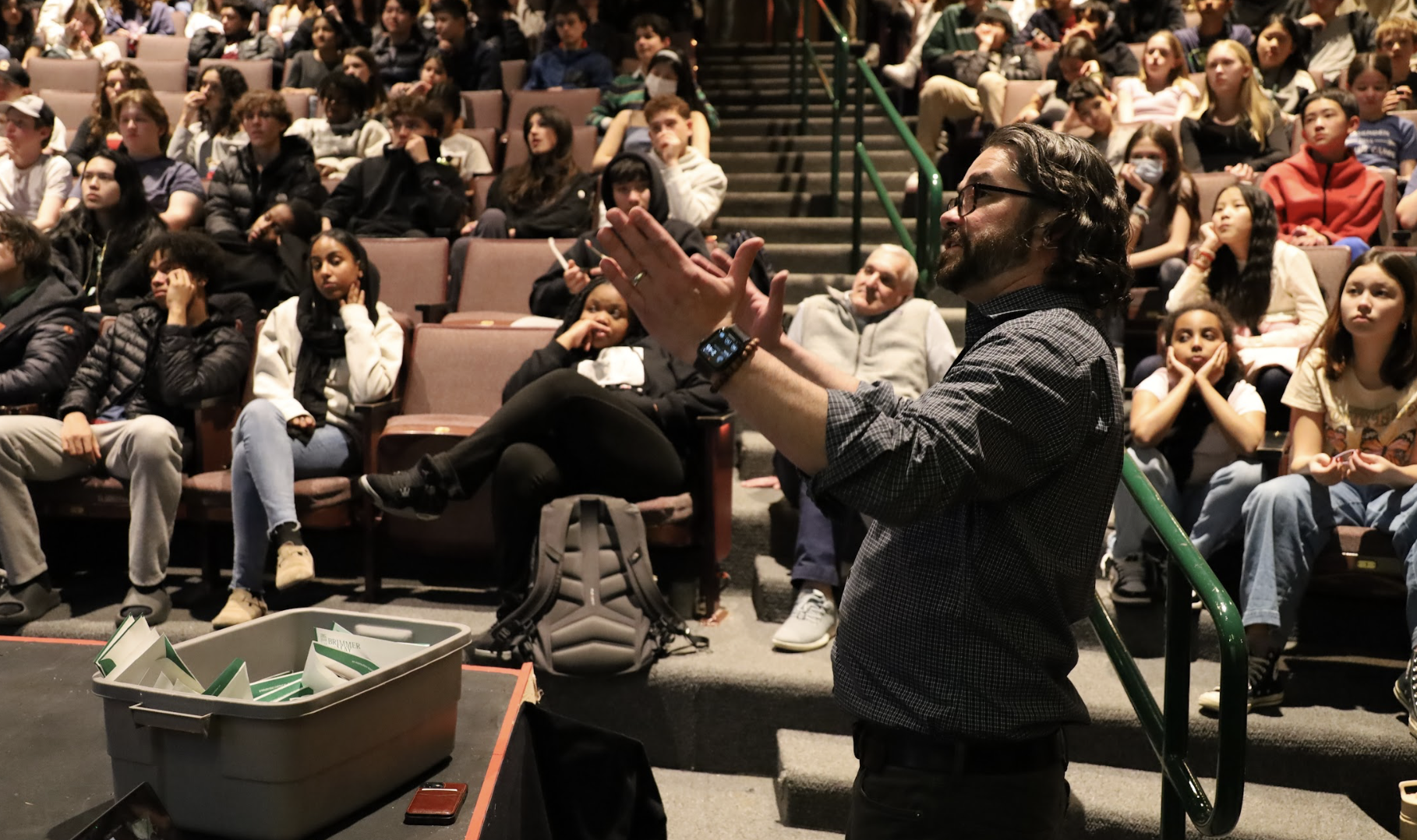
Science Teacher Matt Gallon talks about the solar eclipse at an assembly. The Science Department put together an event at School to celebrate the celestial event. Photo courtesy of David Cutler.
Science Teacher Matt Gallon talks about the solar eclipse at an assembly. The Science Department put together an event at School to celebrate the celestial event. Photo courtesy of David Cutler.
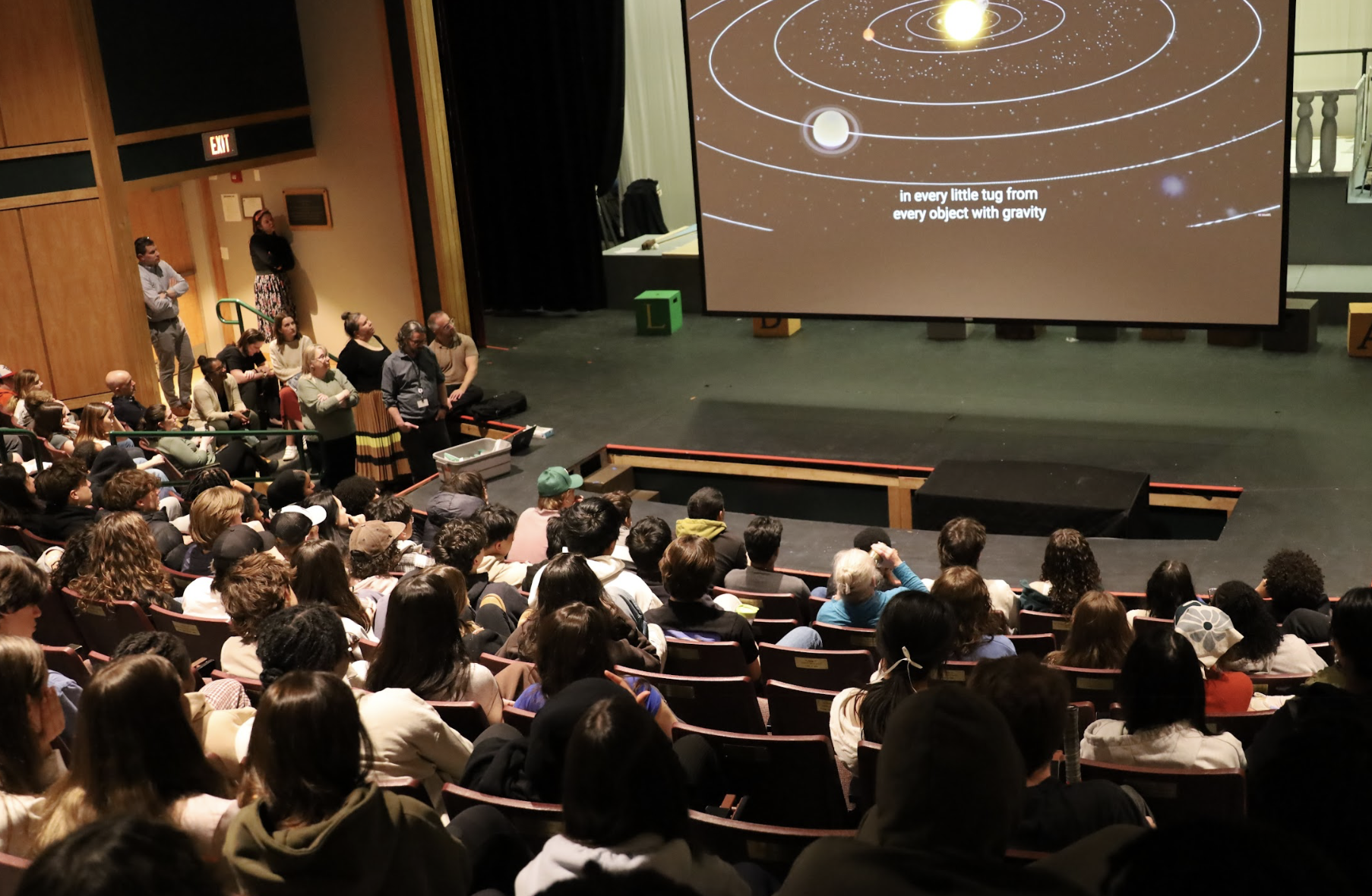
A video displays how solar eclipses happen during an assembly dedicated to the celestial event. Photo courtesy of David Cutler.
A video displays how solar eclipses happen during an assembly dedicated to the celestial event. Photo courtesy of David Cutler.
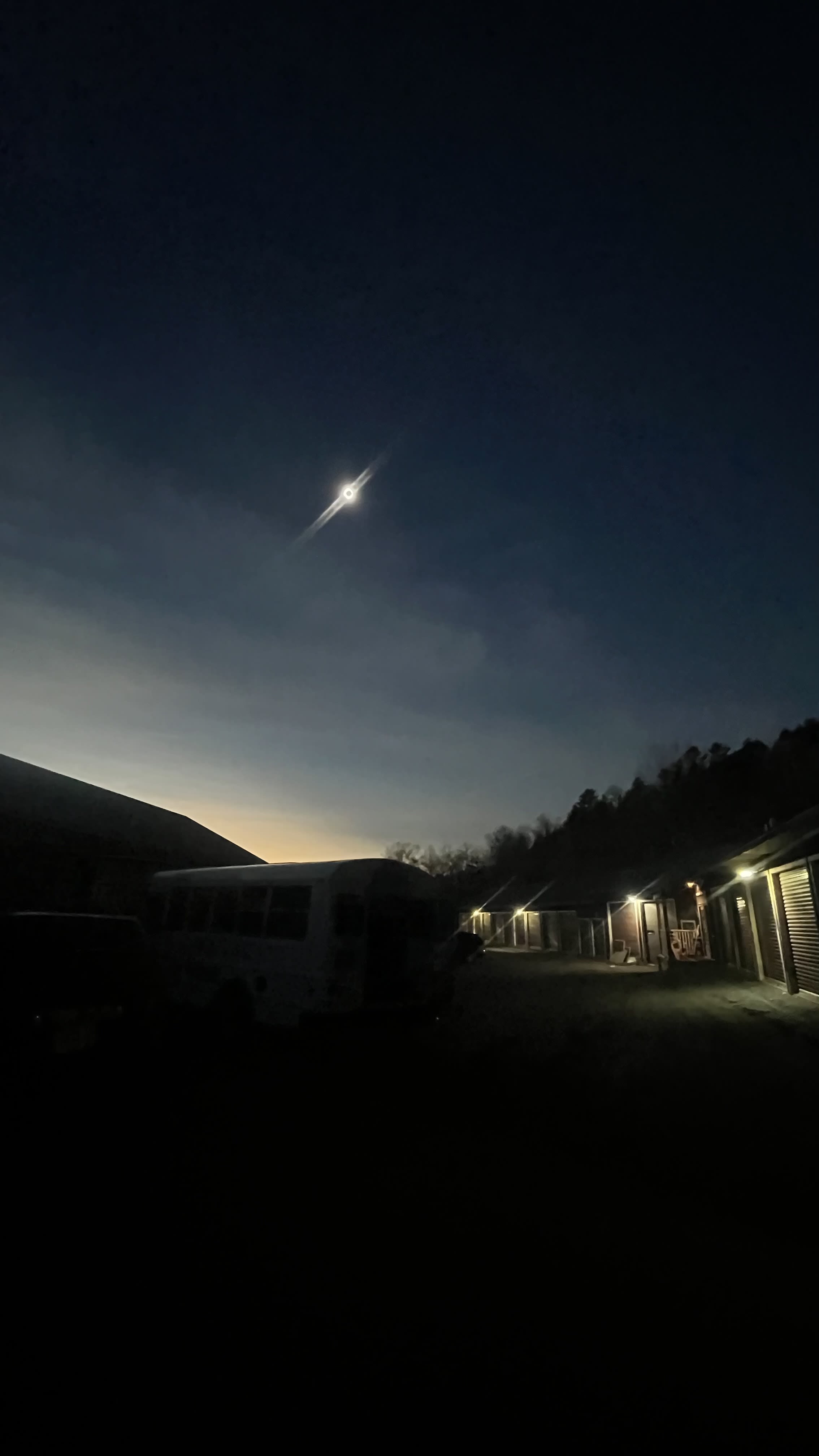
The sun blocked by the moon during the totality phase in Vermont. In a matter of a few moments, the sky turned to twilight and both Venus and Jupiter were visible. Photo courtesy of Evan Michaeli.
The sun blocked by the moon during the totality phase in Vermont. In a matter of a few moments, the sky turned to twilight and both Venus and Jupiter were visible. Photo courtesy of Evan Michaeli.
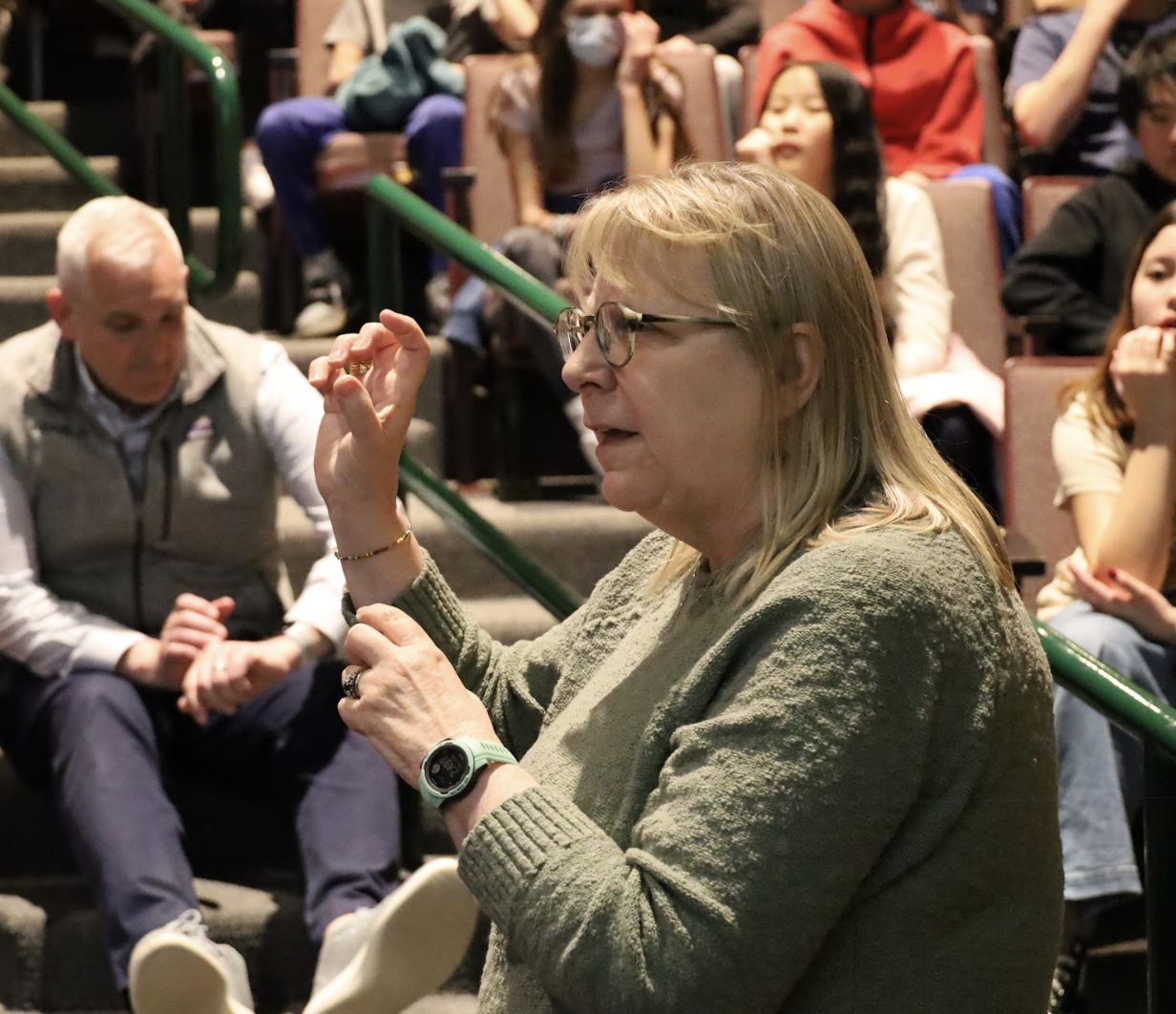
Science Department Chair Cecilia Pan presents on how solar eclipses form during an assembly. Photo courtesy of David Cutler.
Science Department Chair Cecilia Pan presents on how solar eclipses form during an assembly. Photo courtesy of David Cutler.
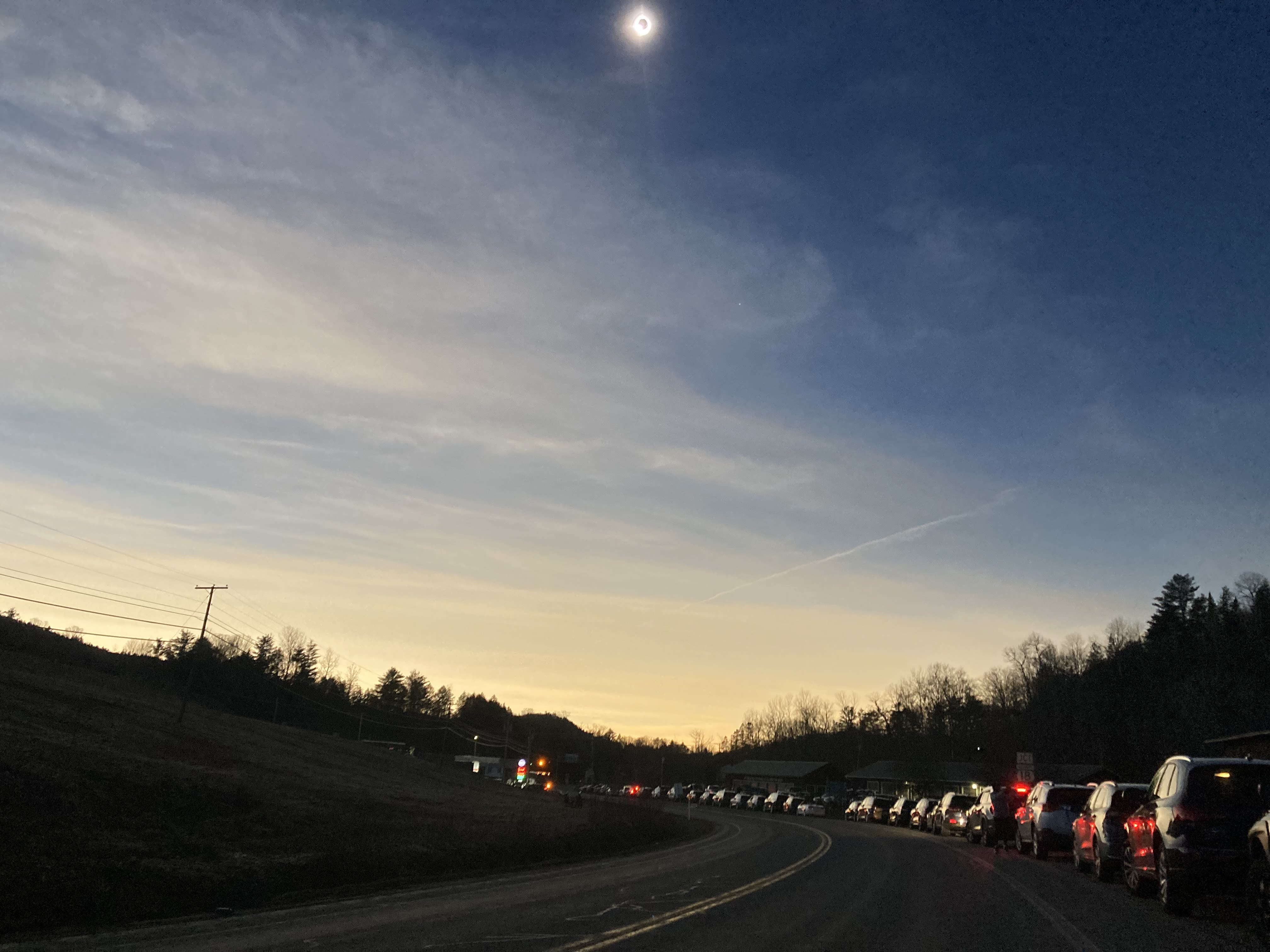
Photo courtesy of Tavio Mares-Van Praag.
Photo courtesy of Tavio Mares-Van Praag.

Students watch the partial eclipse from the School's field. The last period of class was canceled in light of the eclipse. Photo courtesy of David Cutler.
Students watch the partial eclipse from the School's field. The last period of class was canceled in light of the eclipse. Photo courtesy of David Cutler.
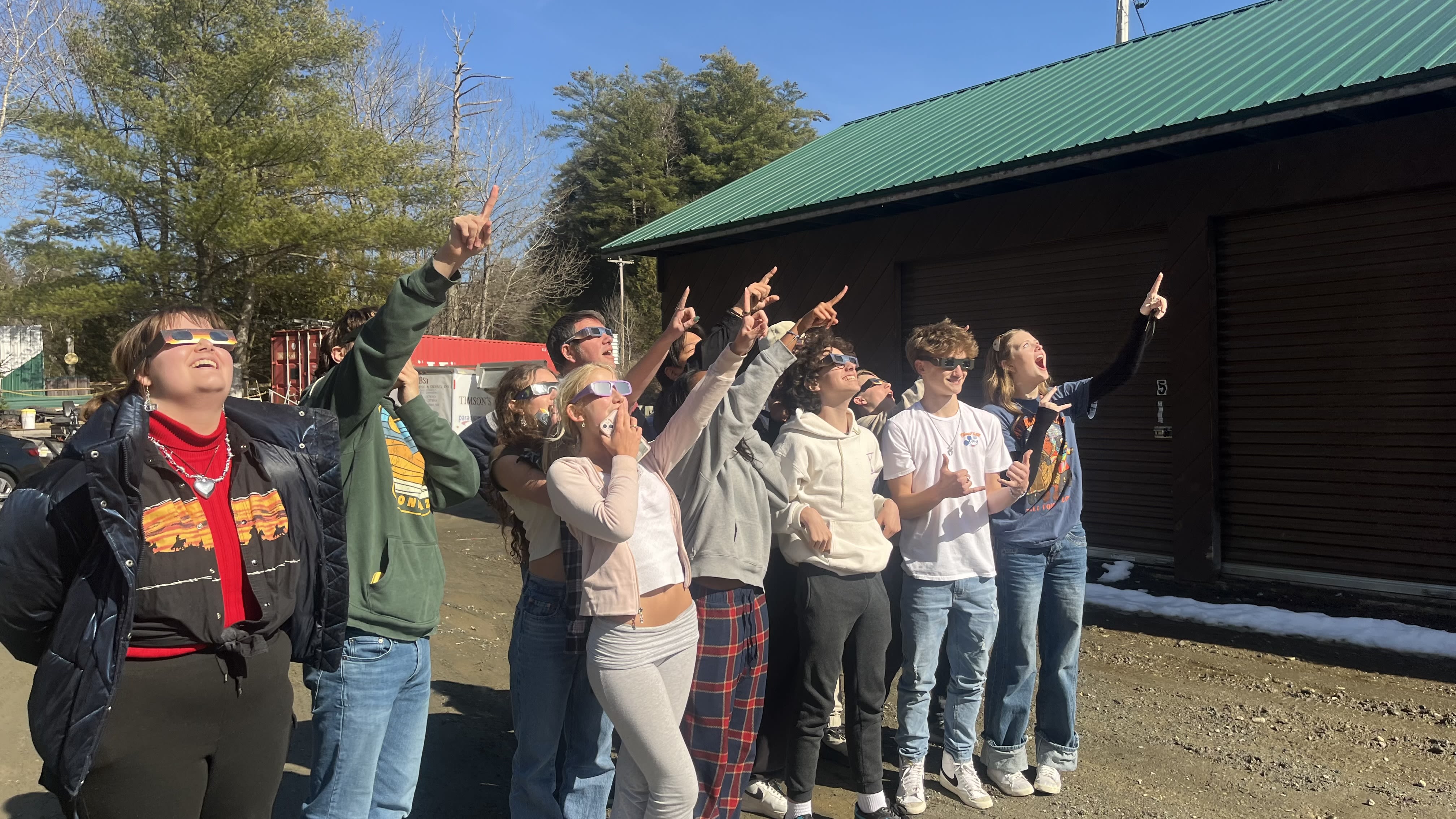
Students point to the sky as they watch the solar eclipse in northern Vermont. Photo courtesy of Evan Michaeli.
Students point to the sky as they watch the solar eclipse in northern Vermont. Photo courtesy of Evan Michaeli.
The eclipse offered not only a unique experience but also a reflection.
We lead hectic lives. They demand punctuality and often cause us to isolate ourselves from the world. We bury our heads in screens and minds in research while rarely unwinding. We live such high-powered lives, and without proper care, we burn out. But this also carries the danger of wishing ahead.
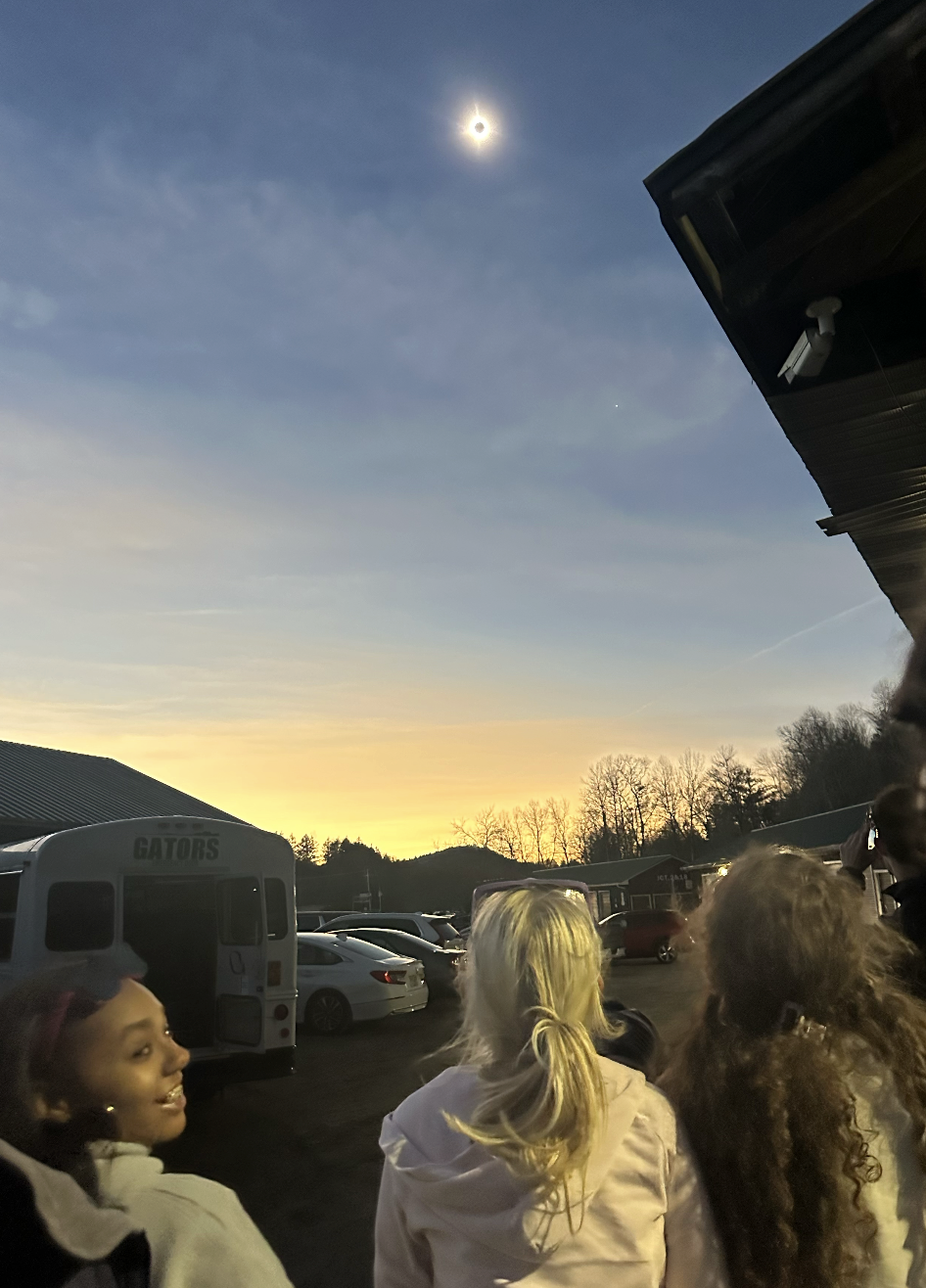
Students look up during the totality stage of the solar eclipse in Vermont. Photo courtesy of Stephanie Altschul.
Students look up during the totality stage of the solar eclipse in Vermont. Photo courtesy of Stephanie Altschul.
As a high school senior, I often find myself in this troubling pattern. With my sights set on college, the last two weeks of high school, and graduation, I slip into a conscious wait, never fully participating in the moment.
The solar eclipse delivered a moment of solace and forced me to take in the cosmic marvel. The cooling sensation and incredible sunset intrigued me. I could only stand and watch as I felt my fleeting thoughts scurry.
The solar eclipse delivered a moment of solace and forced me to take in the cosmic marvel.
While the solar eclipse may have stolen the sun's light, it shone an important message: we all need time to decompress and stare at the beauty of this world.
